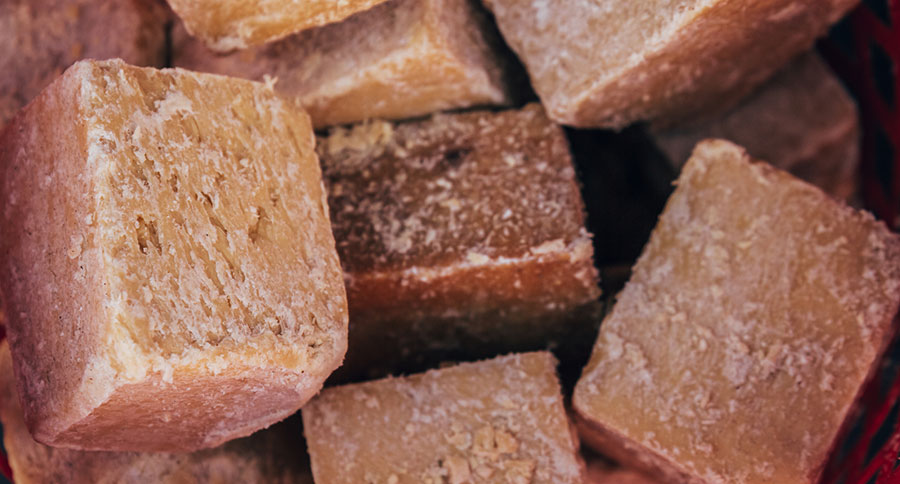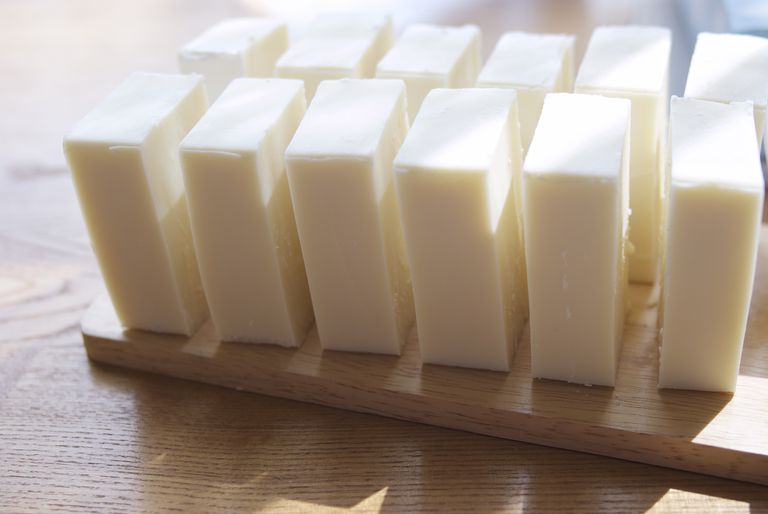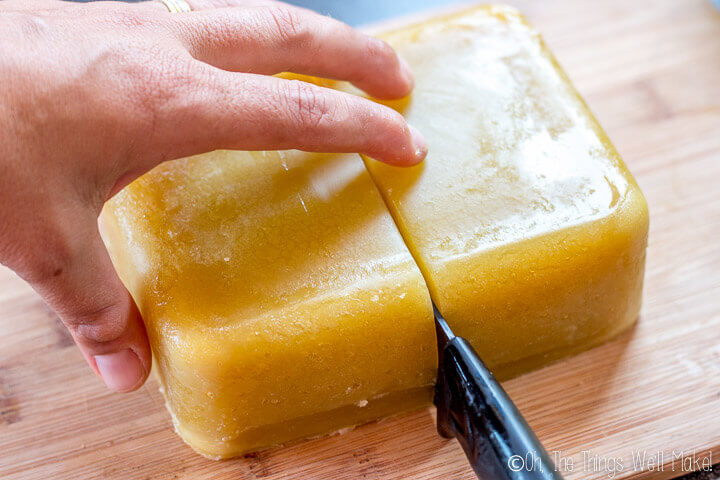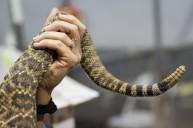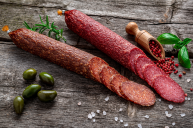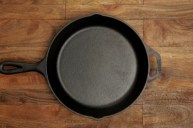Lather up before you head into the woods or off to work with your own soap made from the animals you harvest.
Soap is something that we all use each and every day (at least we should use it every day). Well, if you're a hunter and you're looking to use more of those critters you bag, here's one old timey skill that might interest you: soap making.
Why make your own soap? A few reasons:
1. It's less wasteful than commercially processed soaps.
2. You can tailor the scent and composition to your particular wishes.
3. It's all natural. Natural soap differs from the commercial variety, which are often made from synthetic detergents.
4. It's probably less expensive than buying commercial soap in the long run.
5. It is a do-it-yourself skill that might come in handy and is great to know even if it doesn't.
6. You can use more of the individual animals you harvest.
7. It's fun!
Making soap is really not very difficult. There are four basic methods to make soap at home, but we're really only interested in one: the cold process soap making method.
Soap is made when an acid (animal fat/tallow or oil) is combined with a base (household lye). These two ingredients combine to create a chemical reaction called the saponification process or just saponification. Saponification is about the extent of the multi-syllable words you'll need to know, that's how easy it is to produce homemade soap.
You'll only need a few ingredients and a few pieces of equipment to produce your first batch of soap. The only other ingredient you'll need besides the animal fat and lye is water. It's not necessary, but you may also want to add some nice smelling essential oils to the recipe, to avoid a meaty smelling bar of soap.
The entire soap making process should only take you around an hour to an hour-and-a-half once you have everything in place and ready to go.
Note: This cold process method will make bar-soap, not liquid soap. Once you've got the cold process soap making know-how down, you can then move onto trying your hand at the hot process method. You might even try making liquid soaps using ingredients like olive oil, coconut oil, palm oil, almond oil and more.
Equipment needed:
- Glass or stainless steel bowl (avoid aluminum or other metal bowls)
- Wooden spoon or silicone spatula
- Immersion or stick blender (you can also blend by hand)
- Rubber gloves
- Safety eyeglasses
- Glass measuring cup
- Scale
- Soap molds or a cardboard box lined with plastic overlaid with wax paper
- Towels
- Metal stemmed cooking thermometer
Animal fat or tallow will be one of your main ingredients. First, a few words on animal fats and some of the characteristics different fats produce.
Bird fat is generally not recommended for soap-making. However, any mammal fat should work fine.
Fat from wild pigs produces a hard, strong bar of soap. Deer tallow and fat lends to a softer bar that produces a nice lather with moisturizing properties. Wild goats and sheep make for hard, dense bars of soap that aren't too drying. Bear fat is often best saved for cooking, but if you're going to make soap from it it should be combined with tallow or lard.
I'd be interested to learn if any trappers have any knowledge of the properties of beaver or muskrat fat (or any furbearers, for that matter).
So, when you butcher your animal, make sure to save the tallow and any fat that you won't be using for food purposes.
Rendering fat for handmade soap
Cut the fat into 1-inch chunks, making sure all meat is removed. Add the chunks to a crock pot or slow cooker and heat at the lowest temperature until the fat liquifies. Scoop off any impurities that rise to the surface.
When the fat is liquified strain it into a heat-proof jar or other container to cool. A lined bread pan or baking dish also works well, as you can cut the rendered, solidified fat into blocks for easy weighing and storage.
There is a difference between animal fat and tallow. The fat is the more gelatinous substance of an animal, while the tallow, especially in deer, is a hard, waxy type of fat. Tallow is generally no good for eating, and will take more time to render, but it is valued by the soapmaker.
Soap Recipe
- 16 ounces rendered tallow.
- 5.75 ounces water.
- 2 ounces lye.
- Essential oils if desired.
1. In a well-ventilated area or outside, measure the water in a glass measuring cup or small bowl.
2. Sprinkle the measured amount of lye onto the water. Wear hand and eye protection during the entire process; lye can cause serious burns. The lye mixture will become quite hot. Also be sure to avoid reusing any bowls or utensils for food purposes that have come in contact with lye. For safety purposes you may want to keep an open bottle of vinegar nearby. Vinegar will help neutralize lye should you accidentally spill.
3. Let the mixture cool to around 85 degrees F.
4. Warm the tallow to around 90 degrees and transfer to a glass or stainless steel bowl.
5. Gently pour the lye mixture over the liquid tallow.
6. Begin stirring the lye and tallow with a wooden spoon or spatula. Keep stirring until the consistency becomes that of a thick pudding-like slurry. You could also use the immersion blender here.
7. Add essential oils now (if you wish).
8. Pour the mixture into prepared molds to dry and cure. Cover the mold with waxed paper and set aside.
Curing
Allow the soap to harden and cure for a few days. Then, slice it into bars. This recipe should produce six to eight soap bars, depending on how big you cut them. Now you will still have to allow the soap to age for another four to six weeks.
If, when you try a bar, your hands feel slimy, let the soap age for another week or two.
The basic recipe steps stay the same, but after your first time making cold process soap you can lightly adjust the weights and measures of the ingredients to alter the composition of the soap and its properties. Also, the type of animal fat you use will have an effect on the final product, so experiment with that a little.
And that is how to make soap! Like we said, soap making is a skill that is good clean fun(!), useful and could come in handy someday.
Like what you see here? Experience more articles and photographs about the great outdoors at the Facebook page, Stumpjack Outdoors.
NEXT: THESE ANIMALS THAT EAT TICKS ARE INCREDIBLY BENEFICIAL TO OUTDOORSMEN AND WOMEN
WATCH
